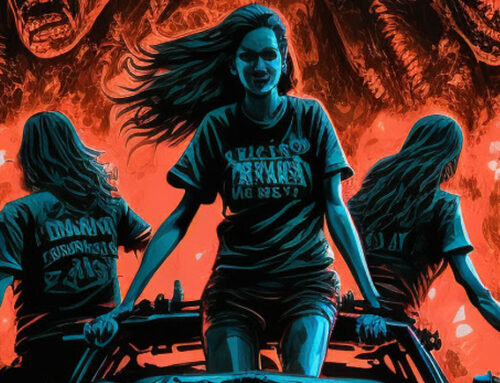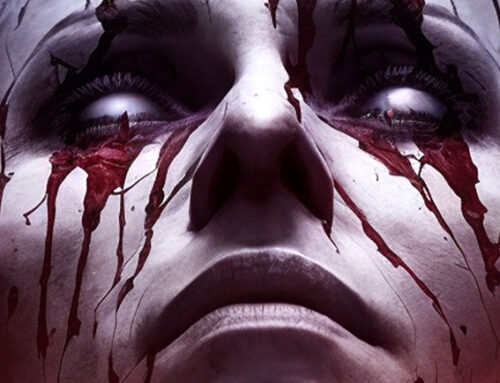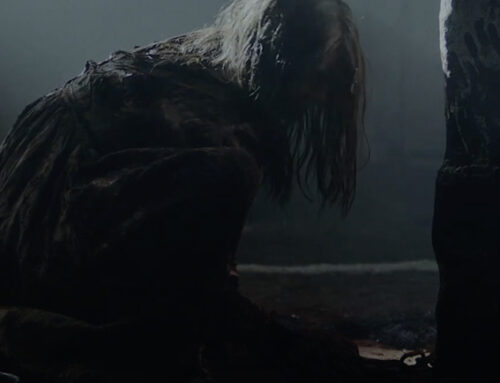Producer Peter Phok is no stranger to the horror genre. He has a working relationship with director Ti West going all the way back to West’s first movie, The Roost, and most recently, X. They were college buddies who, despite their successes over the years, still uphold the spirit of indie filmmaking. Phok also served as executive producer of the criminally underrated “Deadwax,” which streamed on Shudder. Additionally, he worked with arthouse horror auteur Larry Fessenden’s production company, Glass Eye Pix, producing dozens of independent films. Phok spoke to us about his collaborations with Fessenden and West, including X, and his production company, Phok Productions.
You’ve worked with Ti West for years now as a producer, going all the way back to his earlier features like House of the Devil. Tell us how that working relationship started.
Ti and I met at the School of the Visual Arts in New York City. We supported each other’s short films and bonded during those late hours in the editing rooms. We really loved movies, and Ti introduced me to horror. After four years, we came out of SVA and interned at Glass Eye Pix. Larry [Fessenden] basically agreed to make Ti’s first feature, The Roost. Coming out of college, we were delighted to get to work on a feature. I was open to doing anything. New York isn’t Hollywood. Film isn’t the focus in the city. It’s finance and business. But in any case, I was hungry to get involved. I supported Ti in the ways that I could. Basically, I was the production manager and managed the crew.
That relationship spanned from The Roost into Trigger Man, a smaller title. Our friendship from school carried us over. Ti would joke about us being kids, making movies. It didn’t matter how much money we had. All of this led to The House of the Devil. It’s been a great relationship. I also have an affinity for technology and postproduction, so I became the de facto post-production supervisor over the years. On a lot of the films, I served as Ti’s assistant editor. When I got involved with X, I came on as a post-production supervisor. Ti knew how technically challenging this movie was going to be, so it felt like he needed a partner on it.
X is the first film you released with A24. Was that always the studio you had in mind for the film?
Ti worked with them internally on some other projects. It couldn’t have been done without their resources. A24 speaks for themselves in being supportive of the filmmakers. Once they agreed to green light the movie, it became a matter of where we could make the movie. Though it’s set in Texas, it didn’t make fiscal sense to film it there during COVID. So we did it in New Zealand.
Was it initially the plan to have Mia Goth play both Pearl and Maxine?
You’re not supposed to know it is Mia, but Ti envisioned the same actress playing both roles. He knew she would be the one to pull it off. She’s incredible.
What can you tell us about the prequel to X, Pearl, if anything?
Not any more than what’s out there. It’s coming soon. We are nearly finished with it and shot it last year. We’re just finishing up post-production. Then, we have to wait for A24 to roll it out.
Are there any scenes in X that you feared were too over the top and that risked studio interference, or did A24 let you all do what you wanted?
I remember reading the screenplay for the first time and thinking it would be fun and wild. A24 was very supportive. They had access to the dailies, too.
Can you speak more about your experience starting out at Glass Eye Pix?
Larry Fessenden, president of Glass Eye Pix, was really a mentor. He’s a filmmaker who didn’t just make his own films but really supported other filmmakers. He really believes in the artistry of filmmaking. He’s very much an educator. He also believes in honoring the filmmakers before us, like Hitchcock and Spielberg. Larry is also a kid at heart. His office and home are always decked out with horror paraphernalia. He was like an older comrade in movie making. He allowed us to come into his world and do what we wanted to do. We were a community of filmmakers. I think that’s apparent with horror and genre filmmakers in general. I see that at the horror festivals. The horror community is very supportive of each other. We try to learn from each other and support each other. That’s also what we did at Glass Eye.
Talk a little bit about your production company, Phok Productions. I know it’s not just for horror content, correct?
I relocated from New York to Los Angeles, and with my company, I’m focused on working with some new filmmakers and exploring some of my own personal stories. I’m really excited about what’s to come. Some of it will be thrillers, while some of it will be drama. But I’m open to quality storytelling, and it doesn’t need to just be horror-driven.
Finally, can you comment on your experience as an Asian-American producer in the industry, especially after the recent success of Asian-American films like Minari and Crazy Rich Asians? Do you think we’re starting to see more representation?
I really appreciate the question. I have been seeing more representation, and I think it’s wonderful. I think Minari is a great movie. I think we’re also seeing more representation in bigger studio movies. Crazy Rich Asians and Marvel’s Shang-Chi are two recent examples. In terms of representation, my company also produces commercial work. I’m always pushing people of color and women onto our crew. They may not necessarily be on screen, but they’re behind the camera. I come from New York and diversity is normal. Having relocated to Los Angeles, I want to sustain that among my crew and my productions.
Thank you so much for chatting with us, Peter.







